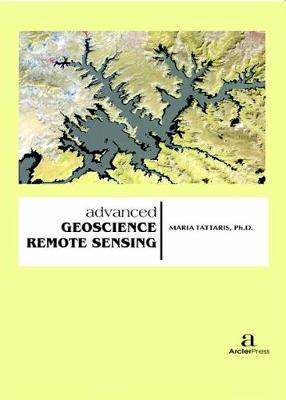Nowadays, advanced remote sensing technology plays tremendous roles to build a quantitative and comprehensive understanding of how the Earth system operates. The advanced remote sensing technology is also used widely to monitor and survey the natural disasters and man-made pollution. Our planet is nowadays continuously monitored by powerful remote sensors operating in wide portions of the electromagnetic spectrum. Geoscience, or earth science, covers all areas of sciences that relate to planet Earth. Such fields include soil science, atmospheric science, climate science, geochemistry, geobiology, geology and oceanography, to name just a few. Research into the area of geosciences allows us to better understand the Earth’s past, present and future. This is particularly important now as many parts of the planet, and the interactions between them, are changing at a rapid rate, for example oceans, landscapes the atmosphere and climate. Remote sensing is a tool with the potential to improve research within this area due advantages such as the possibility to cover large areas at a high spatial resolution, repeatability of measurements allowing for the monitoring through time, non-intrusiveness of measurements and that data can be obtained/measured quickly compared to manual data collection equivalents.
This book, Advanced Geoscience Remote Sensing, presents research topics that make use of remote sensing to investigate key topics within the area of geosciences, for example glacial changes and mapping, land-cover change, carbon stock estimation, model verification, the mapping and monitoring of dust storms, shoreline changes, evaluating impacts of heavy rainfall, impacts of urbanization on vegetation and water resources, tree mortality rates, snow depth estimates, changes in desert sand dunes and thermal mapping of volcanoes. Remote sensing data types and techniques used for the above studies include multispectral satellite imagery (e.g. Landsat, MODIS, ASTER and SPOT), data captured using Unmanned Aerial Vehicles (UAVs), radar imagery, the generation of DEMs and clustering methods. While rigorous enough for the most experienced of scientists, the techniques are well designed and integrated, making the book’s content intuitive, clearly presented, and practical in its implementation. It also identifies that there should be a carefully planned effort on research and application development for the advanced geoscience and related engineering remote sensing techniques. An overview of the most advanced remote sensing systems and algorithms is presented and introduces the most advanced image technologies and their applications for both classification and analysis with up-to-date examples of successful projects and case studies. Chapters are contributed by renowned global scientists and experts in the remote sensing field. Techniques used in geologic mapping and mineral and hydrocarbon exploration, image analysis used in mine development and petroleum exploitation, site evaluation, ground water development, surface water monitoring and geothermal resource exploitation are emphasized. It also exhibits how imagery is used to establish environmental baselines; monitor land, air, and water quality; map hazards; and determine the effects of global warming. This book will be of valuable for students, researchers and practitioners, as well as working professionals in petroleum, mining, groundwater, surface water, engineering, and environmental projects.
- ISBN13 9781680944778
- Publish Date 30 November 2016
- Publish Status Active
- Publish Country CA
- Imprint Arcler Education Inc
- Format Hardcover
- Pages 246
- Language English
